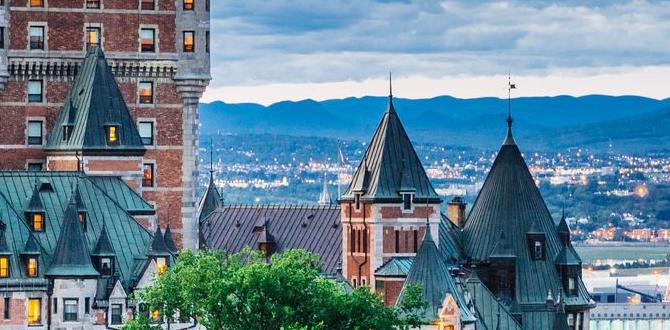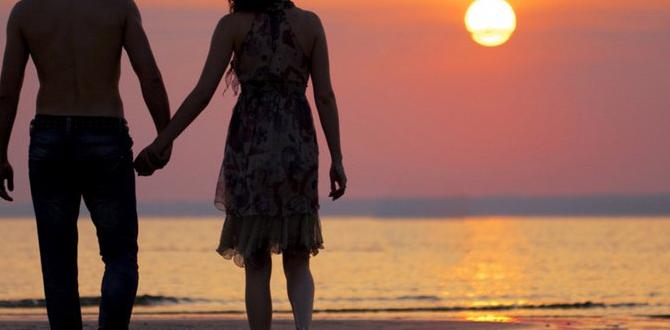Looking for the best Atacama Desert sunrise & sunset photo spots? Explore Lagunas Altiplánicas for vibrant colors, Valle de la Luna for dramatic desert landscapes, and San Pedro de Atacama for accessibility. This guide reveals top locations and tips for stunning, unforgettable shots!
The Atacama Desert. Just the name conjures images of vast, star-speckled nights and sun-baked landscapes. But imagine capturing the desert bathed in the magical hues of dawn and dusk – truly a photographer’s dream! For many, planning how to get those perfect sunrise and sunset shots in such an epic location can feel a bit daunting.
You might worry about finding the best viewpoints, the right timing, or even what to pack to be comfortable. Don’t let that stop you from experiencing the breathtaking beauty of the Atacama at its most picturesque moments. We’re here to guide you, step-by-step, to the most incredible photo opportunities. Get ready to create memories (and photographs!) you’ll cherish forever.
Why Sunrise and Sunset Are Magical in the Atacama
The Atacama Desert, known as one of the driest places on Earth, offers a unique canvas for sunrise and sunset photography. The thin, arid atmosphere, free from light pollution and abundant moisture, leads to exceptionally clear skies and dramatic color palettes. During dawn and dusk, the low angle of the sun casts long shadows, accentuating the desert’s rugged terrain and giving it a surreal, almost otherworldly glow.
The vibrant oranges, fiery reds, soft pinks, and deep purples painted across the sky are amplified by the stark, minimalist landscape, creating scenes that are both powerful and incredibly serene. It’s these atmospheric conditions and the desert’s dramatic topography that make the Atacama a world-class destination for capturing unforgettable sunrise and sunset photographs.
Planning Your Atacama Photo Adventure
Successful sunrise and sunset photography in the Atacama Desert requires a bit of planning, but it’s entirely manageable, even for beginners. Think of it like packing smart for any trip – a little preparation goes a long way in ensuring comfort and maximizing your experience.
Essential Gear for Photographers
To capture the best of the Atacama’s golden hours, the right gear is key. You don’t need the most expensive equipment, but a few essentials will make a big difference:
- Camera: Any camera, from a smartphone to a DSLR, can capture beautiful images. If using a DSLR or mirrorless camera, bring a versatile lens (like an 18-55mm kit lens or a 24-70mm) that can handle wide landscapes and closer details.
- Tripod: Essential for stable shots, especially in low light. A sturdy tripod will prevent blurry photos and allow for longer exposures to capture more light and detail.
- Remote Shutter Release or Timer: Reduces camera shake when pressing the shutter button, further enhancing image sharpness.
- Extra Batteries: Cold temperatures can drain batteries quickly, so always have spares for both your camera and any other electronics.
- Memory Cards: You’ll be taking a lot of photos! Ensure you have enough storage space.
- Lens Cleaning Cloth: Dust is everywhere in the desert; keep your lenses clean for clear shots.
- Headlamp or Flashlight: Crucial for navigating in the dark before sunrise or after sunset. Red light options are preferred to preserve night vision.
Comfort in the Desert Climate
The Atacama Desert can experience significant temperature drops, especially at altitude and during the early morning and late evening hours. Being prepared for the chill is vital for a comfortable and enjoyable photography experience, even if you’re traveling with children or require extra support like travel-friendly adult or child diapers for peace of mind on long excursions. Here’s how to layer up:
- Base Layer: Moisture-wicking thermal wear (long johns and a long-sleeved shirt).
- Mid Layer: Fleece or down jacket for insulation.
- Outer Layer: Windproof and water-resistant jacket.
- Extremities: Warm hat, gloves, and scarf are non-negotiable.
- Footwear: Sturdy, closed-toe hiking boots or shoes are best for navigating uneven terrain.
For parents traveling with little ones, ensure their comfort too. Think warm hats and mittens for babies and younger children, and consider easier access solutions for diaper changes if you’re on the go. Knowing these essentials are handled allows everyone to focus on the incredible scenery.
Timing is Everything
The “golden hour” – the period shortly after sunrise and before sunset – offers the most flattering light. The softer, warmer light minimizes harsh shadows and saturates colors beautifully. Research the exact sunrise and sunset times for your visit and aim to be at your chosen spot at least 30-60 minutes beforehand to set up and capture the transition.
For stargazing, the Atacama is one of the best places on Earth, thanks to its altitude and arid conditions. Many tours combine sunset viewing with astrophotography. Organizations like the International Astronomical Union offer insights into optimal stargazing conditions globally.
Top Atacama Desert Sunrise & Sunset Photo Spots
The Atacama offers a diverse range of landscapes, each providing a unique backdrop for sunrise and sunset photography. Here are some of the most spectacular locations:
Valle de la Luna (Moon Valley) and Valle de la Muerte (Death Valley)
Often visited together, these adjacent valleys are iconic Atacama landscapes. Valle de la Luna, with its surreal, moon-like terrain, salt formations, and sand dunes, transforms under the soft light of dawn and dusk. The colours of the rock and sand shift from earthy tones to warm oranges and deep reds, creating a dramatic and otherworldly scene.
Why it’s great for photos:
- Dramatic Formations: The striking sand dunes, salt crusts, and rock formations offer incredible textures and shapes.
- Colour Palette: The minerals in the earth create vibrant reds, oranges, and purples as the sun moves.
- Accessibility: Relatively easy to access from San Pedro de Atacama, often visited on guided tours.
- Sunset Views: Famous for its stunning sunsets, where the entire valley seems to glow. The “Piedra del Coyote” offers a panoramic view.
Sunrise vs. Sunset: While both are beautiful, sunset is often more popular here due to the ease of access and the dramatic light that bathes the valley. Sunrise can be equally magical, offering quieter moments and a different play of light on the formations.
Lagunas Altiplánicas (Miscanti and Miñiques Lagoons)
Located at a high altitude (around 4,200 meters or 13,780 feet), these twin lagoons are surrounded by volcanoes and are home to flamingos and other unique birdlife. The stark contrast between the deep blue water, the snow-capped volcanoes, and the vast, clear sky makes for breathtaking photographic opportunities.
Why it’s great for photos:
- Spectacular Scenery: The combination of vibrant blue lagoons, imposing volcanoes, and the vastness of the Altiplano is stunning.
- Wildlife: The chance to capture flamingos or other birds adds a dynamic element.
- Reflections: Calm waters often create perfect reflections of the sky and surrounding mountains.
- Sunrise Colors: The early morning light paints the volcanoes and sky in soft, pastel tones.
Sunrise vs. Sunset: Sunrise here is particularly special. The calm, cool air often results in glassy water, providing incredible reflections. The first rays of light hitting the snow-capped peaks are unforgettable. Sunset can also be spectacular, with the skies often ablaze with color reflecting on the lagoons. However, sunrise can be less crowded.
Important Note: As these lagoons are part of a national reserve, there’s an entrance fee. They are typically visited as part of a full-day tour from San Pedro, so plan accordingly. Remember to acclimatize to the altitude before attempting strenuous activities.
Salar de Atacama (Atacama Salt Flat) & Laguna Chaxa
The world’s largest salt flat is an immense, white expanse that offers a unique photographic perspective. Laguna Chaxa, located within the Salar, is a shallow salt lake teeming with flamingos. The flat, open landscape provides unobstructed views of the sky, making it ideal for capturing panoramic sunsets and sunrises.
Why it’s great for photos:
- Expansive Views: The vast salt crust creates a sense of immense space and minimalism.
- Flamingos: Laguna Chaxa is a prime spot to photograph flamingos against the white salt and colorful sky.
- Unique Textures: The hexagonal salt patterns in the Salar are visually striking.
- Light Play: The flat terrain allows sunlight to paint broad strokes across the landscape and sky.
Sunrise vs. Sunset: Sunset is often the more popular choice here, with the warm light reflecting off the salt crust and the flamingos silhouetted against the vibrant sky. Sunrise can offer a serene and peaceful experience with soft, diffused light.
Piedras Rojas (Red Rocks) & Salar de Talar
Further afield and requiring a dedicated tour, Piedras Rojas offers a dramatic landscape of reddish rocks contrasting with a turquoise lagoon and salt flats, all set against a backdrop of volcanic peaks. The colors here are incredibly vivid, especially during the golden hours.
Why it’s great for photos:
- Intense Colors: The red rocks, turquoise water, and white salt create a vibrant, almost painted, scene.
- Volcanic Scenery: Imposing volcanoes provide a dramatic mountain backdrop.
- Remote Beauty: Offers a sense of untouched, raw wilderness.
Sunrise vs. Sunset: Given its remote location and the typically long tour times, finding a dedicated sunrise shoot here can be logistically challenging. Sunset is more commonly experienced as part of day tours, offering spectacular light on the unique geological formations.
El Tatio Geysers
While primarily famous for its pre-dawn geyser activity, El Tatio also offers a unique sunrise experience. Waking up in the cold darkness to witness plumes of steam rising from the earth as the sun begins to paint the sky over the Andes is a truly memorable event.
Why it’s great for photos:
- Steam and Light: The interaction of geyser steam with the early morning light creates ethereal, misty landscapes.
- Dramatic Dawn: The sunrise over the Andes is spectacular, often with vibrant colors.
- Otherworldly Atmosphere: A truly unique geological phenomenon offering surreal photographic opportunities.
Sunrise vs. Sunset: El Tatio is a quintessential sunrise destination. Most tours depart in the middle of the night to witness the geysers at their most active as the sun rises. Sunset photography is less common here due to tour schedules and accessibility.
Parque Nacional La Garganta del Diablo (Devil’s Throat National Park) is an example of another natural wonder where light plays a crucial role, though in the Atacama context, it’s the clarity and colors of the sky that dominate during sunrise and sunset. Planning for how to reach these more remote locations often involves guided tours, which can be arranged through local operators in San Pedro de Atacama.
Tips for Capturing Amazing Shots
Once you’re at your chosen location, here are some practical tips to elevate your photography:
Embrace the Light
- Shoot into the Light (Backlighting): During sunrise and sunset, a slight amount of backlighting can create beautiful silhouettes, rim lighting, and lens flare effects.
- Look for Reflections: If there’s water, like at Lagunas Altiplánicas or Laguna Chaxa, use reflections to add depth and symmetry to your images.
- Capture the Color Gradients: The sky often displays spectacular gradients of color. Use a wide-angle lens to encompass the sky with your foreground elements.
Composition Secrets
- Rule of Thirds: Imagine your frame divided into nine equal parts by two horizontal and two vertical lines. Place key elements along these lines or at their intersections.
- Leading Lines: Use natural lines, such as the edge of a sand dune, a dry riverbed, or a winding path, to draw the viewer’s eye into the scene.
- Foreground Interest: Don’t just focus on the sky. Include compelling foreground elements – interesting rock formations, desert flora, or even your own silhouette – to ground your image.
- Look for Silhouettes: The dramatic landscapes and colorful skies are perfect for creating striking silhouettes. Position your subject (a person, an animal, a unique rock) against the brightest part of the sky.
Technical Photography Advice for Beginners
- Aperture: For landscapes, use a smaller aperture (higher f-number, like f/8 to f/16) to ensure more of the scene is in focus (greater depth of field).
- Shutter Speed: This will vary depending on light conditions. If using a tripod, you can use slower shutter speeds to capture more light. For moving subjects like water or clouds, slow shutter speeds can create a sense of motion.
- ISO: Keep ISO as low as possible (e.g., 100 or 200) to minimize digital noise and maintain image quality. Only increase it if absolutely necessary in very low light conditions.
- White Balance: While auto white balance often works well, try experimenting with settings like “daylight” or “cloudy” to enhance the warm tones of sunrise and sunset. You can also adjust this in post-processing.
- Shoot in RAW (if possible): RAW files contain more image data than JPEGs, giving you greater flexibility for editing colors, exposure, and white balance later.
Sample Itinerary Snapshot
To give you an idea of how to fit these amazing photo opportunities into your trip, here’s a sample of what a few days could look like, focusing on sunrise and sunset expeditions from San Pedro de Atacama:
| Day | Morning (Sunrise) | Midday Activity | Evening (Sunset) |
|---|---|---|---|
| 1 | Acclimatize in San Pedro. Light photography around town. | Explore San Pedro’s artisan market. | Guided tour to Valle de la Luna for sunset. Capture the changing colors on rock formations and dunes. |
| 2 | Early start for El Tatio Geysers tour. Photograph steam plumes against the rising sun over the Andes. | Return to San Pedro. Rest and have lunch. | Tour to Lagunas Altiplánicas. Focus on capturing the vibrant blues, volcanic backdrops, and potential wildlife during golden hour. |
| 3 | Sunrise at Salar de Atacama & Laguna Chaxa. Photograph flamingos and expansive salt flats. | Visit a local observatory for a daytime tour or explore more of San Pedro. | Sunset shoot at Valle de la Muerte or a viewpoint overlooking the desert. Consider a high vantage point for panoramic views. |
This is just a suggestion; many tours can be customized or combined. Always check with local operators for the most current tour schedules and recommendations. Remember that high-altitude tours require proper acclimatization, which is why we recommend starting with lower-altitude spots like Valle de la Luna.
Frequently Asked Questions
What is the best time of year to visit the Atacama Desert for photography?
The Atacama Desert is a year-round destination. However, the shoulder seasons (April-May and September-October) often offer pleasant temperatures and slightly fewer crowds. Dry weather is consistent, ensuring clear skies for both photography and stargazing. High season for tourism is generally from December to February.



